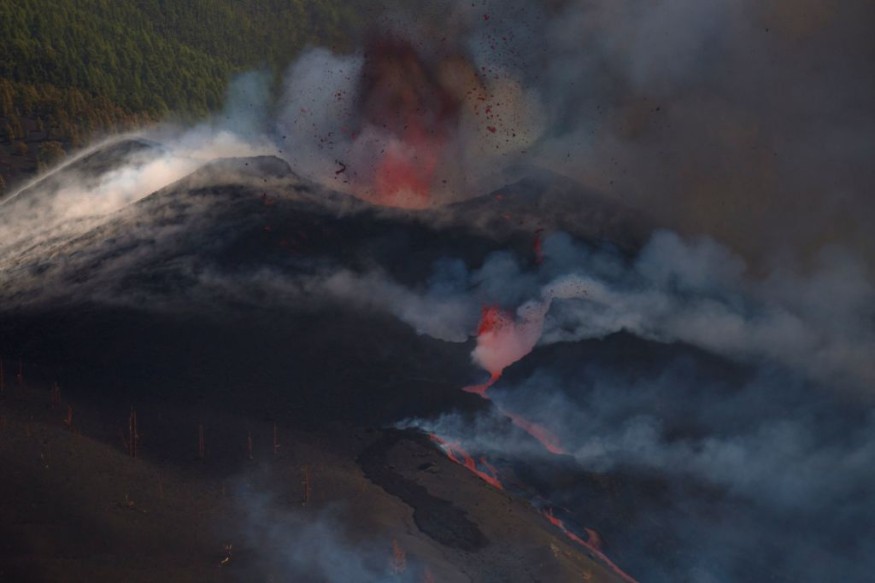Recent reports have it that that an erupting volcano on a Spanish island off northwest Africa is now more aggressive blowing more fissures on its cone.
Phys.org reported that on Friday, the volcano blew specifically two more fissures on its cone Friday that burped forth lava, with officials reporting very strong activity in the site.
The said new fissures, approximately 50 feet apart, sent streaks of blazing red and orange molten rocks down headed for the sea, parallel to an earlier flow that got to the Atlantic Ocean earlier this week.
According to the Canary Islands' emergency volcano response department's technical director Miguel Ángel Morcuende, the volcano was quite more aggressive nearly two weeks after it erupted on the island of La Palma.

Emitting Gas and Ash
A similar AP News said, officials said overnight, scientists were able to record eight new earthquakes with a maximum magnitude of 3.5. The eruption was emitting gas and ash up to 20,000 feet into the air.
The said emission has prompted the evacuation of over 6,000 people since the eruption on September 19 and this initiative helped avoid casualties.
A new sited of solidified lava where there is a flowing molten rock into the sea is extending more than 50 acres. In connection to this, officials were monitoring the quality of air along the shoreline.
Levels of sulfur dioxide in the site rose although it did not represent a threat to the health of people, the government of La Palma said.
Nonetheless, it advised local residents to remain indoor. It advised as well, that people on the island wear face coverings and eye shields against heavy volcanic ashfall, a similar Independent. ie report specified.
La Palma
So far, scientists have estimated that the volcano has mitted approximately 80 million cubic meters of molten rock, more than twice the amount of the last eruption of the island in 1971.
The lava has thus far destroyed or partially destroyed over 1,000 buildings which include residential homes and farming infrastructure, and roughly 1,750 hectares.
Home to roughly 85,000 people who live mostly from tourism and fruit farming, La Palma is part of an archipelago off northwest Africa, the volcanic Canary Islands, that is part of the territory of Spain.
The island is approximately 22 miles long and 12 miles wide at its broadest point. While the volcano is active, this report specified that life has continued as usual on the island.
Government's Initiative
A CNN report said Spanish Prime Minister Pedro Sánchez has postponed his New York trip for the UN General Assembly so he could travel to La Palma due to the volcanic eruption.
In a Twitter post, the government official said he was at the moment "heading to the Canary Islands" due to the seismic evolution, to see first-hand the situation in La Palma, the coordination of the means, as well as the protocols that have been implemented.
Angel Torres, head of the local government described the images of the eruption as "impressive." He said he would be at the Head Committee for Civil Protection and Attention for Volcanic Risk Emergencies to assess the situation.
The island was on alert for a probable eruption of the volcano following several earthquakes that were felt over the weekend.
In a statement, the volcanology institute said that more than 25,000 earthquakes had been identified in the last nine days around the Cumbre Vieja volcano. The highest magnitude recorded was a 4.2-magnitude earthquake on the Richter Scale.
Related report about the Spanish volcano eruption is shown on DW News's YouTube video below:
RELATED ARTICLE : Kīlauea Caldera Survey Helps Check Possible Changes in Volcano's Gas Emissions After 2018 Eruption
Check out more news and information on Volcanoes in Science Times.












